Basic fish farm equipment is the same for small and large farmers. People often wonder what equipment they need to start a fish farm. If you are one of those people wondering what the important tools you need to run a fish farm successfully are, then this article will be helpful for you. Below are some basic equipment and tools required for fish farming business.
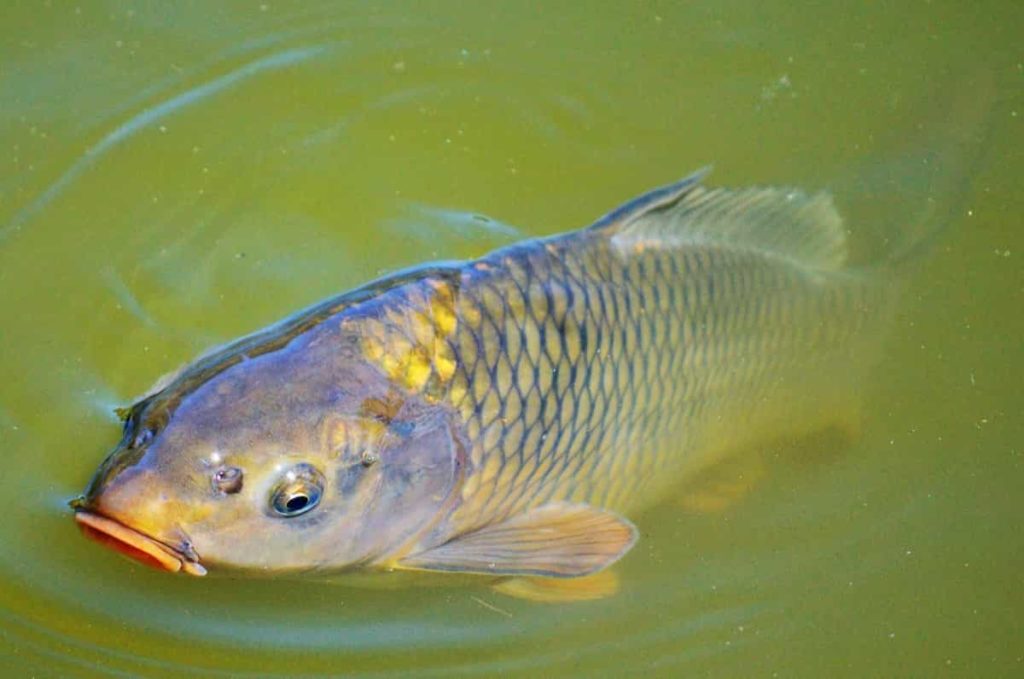
Basic equipment and tools required for Fish farming
Ponds
Ponds are the first and most important equipment needed for fish production. The pond is either an above-ground pond made of plastic, concrete, or block and a dugout pond. A pond is a place where you pick up your fish from day one when you collect them until harvest day.
Fish ponds need specific soil types, and slopes, so many features are unsuitable for pond construction. It is best to consult with aquaculture experts on the viability of any property you hope to build a pond. There are different ponds that you can use to raise fish species. Ordinary people don’t have to use it, especially if you are a beginner and you want to run your fish farming business on a small scale.
Equipment needed to build a fish pond
- Digger: You will have to buy, rent, or borrow the digger to construct your pond.
- Sand or Sodium Bentonite Clay: You will need sand in the pond lining. It helps to reduce the tarp tears.
- Trap liner: Place the trap liner on top of the pond, which is perfectly fine and harmless for fishing. However, you can use sodium bentonite clay instead of liners for some soils. Sodium bentonite clay is much cheaper and more durable.
- Geotextile Fabric: This special tool will be used to protect pond water. Also, it will help reduce the water filling rate.
- Filter – It cleans the water coming from the pump.
- Liner – It prevents water from entering the ground.
- Underlayment – Protects liner from puncture and stretching during installation.
In case you missed it: Top 50 Fish Farming Tips, Ideas, and Techniques
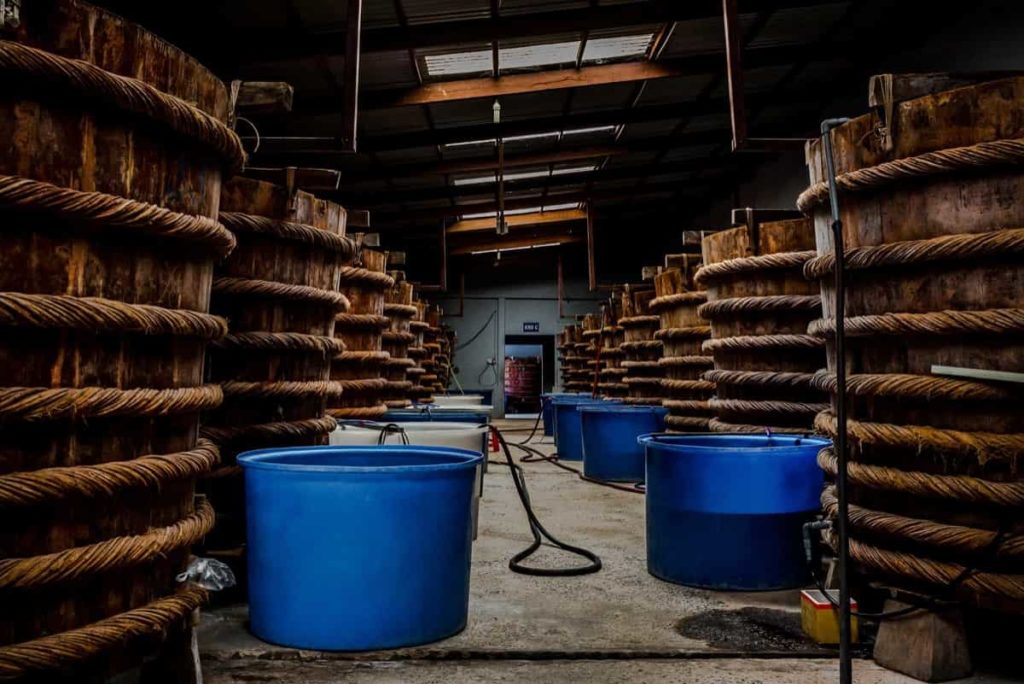
Pond Liner
Before placing any liner or underlay, remove all sharp objects. Then place your underlay on the base and each side; once you are happy to cover all areas, place the liner. Gradually fill the pool with water, and slowly pull and adjust the liner to ensure a crease-free edge and clean finish. Fill it up, and then leave it to settle overnight.
Remove any excess liner the following day; Leave an overlap of at least 30 cm on the edge. When smoothing the pool or customizing, make sure there is a small overlap to protect any exposed liner from UV damage. Grass/turf can also be used, which can go into the body of water if desired.
Pond pumps
Pond pumps help keep pond water clean and healthy by providing oxygen with constant movement. It is good for controlling fish, other wildlife in the pond, plant health, and stagnant green water.
Plumbing and water pumps
Plumbing requires iron pipes located at the inlet and outlet. A pipe is connected to the water pump for easy filling and discharge of water. The water pump is essential because the fish farmer needs a simple procedure to perform the functions of changing the water. The water pump is either a solar pump or an electric pump for better performance and easier maintenance. Water pumps are one of the essential requirements of a fish farm.
It will help the farmers pump water into the ponds and draw water when required. But, with the right sense of humor, the fish farm should be located in a sloping area to take advantage of gravity, especially when the pump is pulled out of the water. Traditional fish farmers use tanks and net enclosures inside the body of water. In hot weather, evaporation can cause dehydration in the pond. Therefore, pumps are installed in small ponds and lakes to ensure fish get enough fresh water.
The water pump is useful for anyone who raises his fish in an earthen pond. The equipment is a pool of water. When you want to harvest fish, a water pump controls and draws water out of the pond. It is unnecessary to buy it as you can easily rent it from stores that rent/sell fishing gear. But it is advisable to have one because it can be another source of income for you.
In fish farms, there are two types of commonly used pond pumps which are;
- Centrifugal: These pumps should be offered horizontally through the outer boundary of the pond.
- Turbines: to be presented horizontally.
However, regardless of the type of drainage or pump you would like to use, they will still effectively perform the water movement around the ponds. Farmers use pumps to draw water at the end of the growing season. Both types work differently but effectively transfer water. Centrifugal pumps are set horizontally around the outer edge of a pond or lake, while turbine pumps are set vertically.
In case you missed it: Fish Farming in Tamil Nadu, How to Start, Tips, Ideas
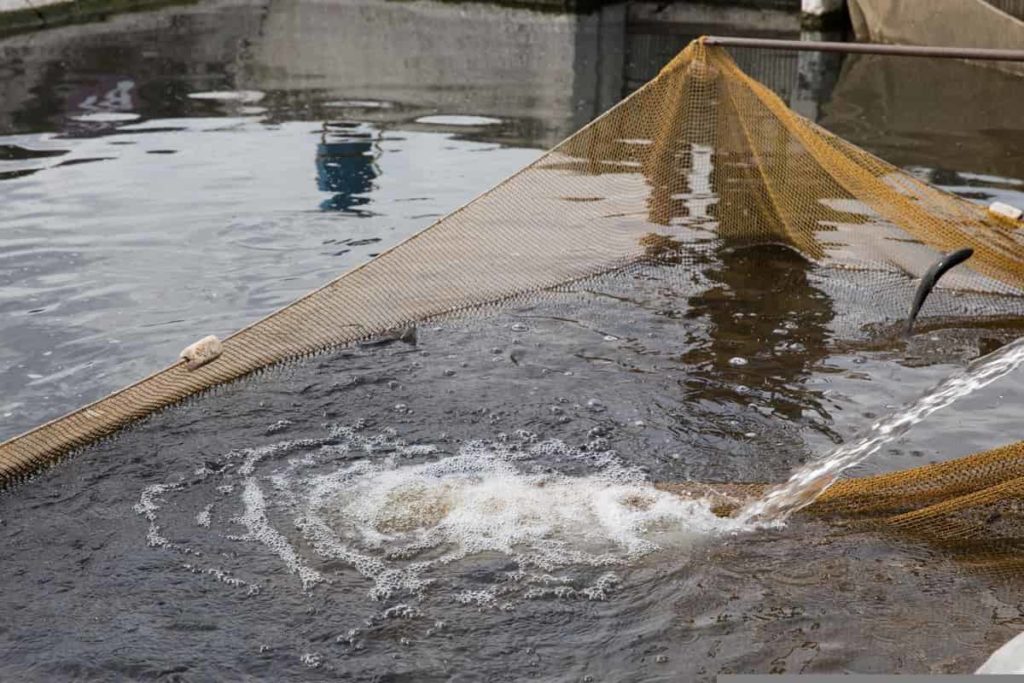
Water tester
The water tester needs to know the alkalinity and acidity of your water and can determine if you will succeed in this business. There are simple (manual) and automatic types of water quality testers that are not too expensive for you to obtain. Water testers are especially important if you take your fish out and grow them to the fingerling, juvenile, or table size. Knowing your water quality will help you quickly determine if you need to manage your water.
Aerators
A major asset is the aerators because they help fish grow fast and healthy in a relatively short time. Aerators come in various shapes, sizes, and functions, depending on the size of the pond and the number of fish. Another type is a wastewater aerator, air/oxygen aerator, and filter medium. The aerators/air pumps help increase the dissolved oxygen level inside the pond, thus creating space for more fish to live in the same pond. This act calls for action, especially when the water in the pond is still.
Pumping
When it is impossible to supply water by gravity, pumping needs to be studied; at this time, it is not recommended to implement an intensive fish farm in a tropical country where pumping is required. The flow of more than 1,000 m3 / h will be required for deep commercial production (300/400 tons per year). When pumping is necessary, it is more appropriate to consider wide or semi-deep farming in tropical conditions. Extensive systems do not require as much water as the other alternatives mentioned.
In these cases, the water supply should compensate for the water lost through evaporation and infiltration into the soil. In a semi-deep system, 15 to 25 % per day of water exchange must be calculated. To estimate the correct pumping requirements, the calculation will be based on the water requirements of the breeding system, the size of the ponds, the type of soil (damage caused by infiltration), and the climate (damage caused by rain and evaporation). Each case requires a specific study to determine the type of pumps used and their capacity.
Automatic Fish Feeder
The automatic feeder feeds the fish at predetermined times. This equipment eliminates food by hand and is quite effective. A fish feeder can only function properly if the water is mechanically recycled. It is because if the fish feeder continues to feed the fish while the water is full and dirty, it can kill them.
In case you missed it: How this Farmer Made 10 Lakh from His Murrel Fish Farm – A Success Story
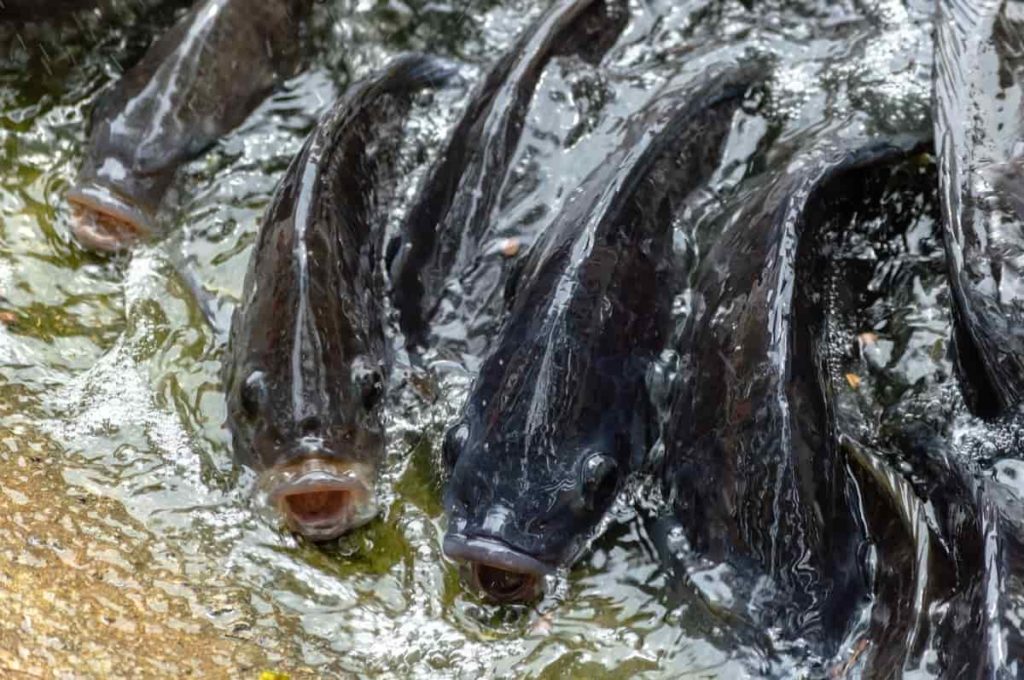
10. Fish Feeding Machine
The farmer will easily drop the feed into the pond regularly with the fish feeding machine. However, before leaving the feed in the ponds, you must ensure that the feeders are working correctly and that they must be fed fish. In addition, as a farmer, you can buy grinders, mixers, pellet-making machines, etc., if you wish, they will help you prepare your fish food.
Power Supply
Another tool that every fish farm is the source of power supply. A constant and reliable power source is essential as you will need it to pump water into the ponds regularly. One source of electricity could be a government power supply, a generating set, or a solar-powered power source.
Fish graders
Fish graders are used to classifying and separating fish according to their size. This operation is important because it allows for dramatic improvements in development efficiency and improves the overall management of the use of farm facilities. If fish are not properly classified, small fish have difficulty accessing food because of physical competition with larger fish and suffer from stress, resulting in poor growth performance. Since fish pellets are the same size, the size of the fish should also be the same. There are mainly two types of fish grading equipment:
- Manual fish graders
- Mechanical fish graders
Manual fish graders: They are made up of boxes attached to different-sized screens, each corresponding to the size of the physical fish. It is a very simple system that allows small fish to pass through the screen while keeping large fish in a box. One main benefit of the system is that it does not require any electrical energy. However, it produces more stress than an automatic grader, which is caused by over-handling the fish.
Mechanical graders are more sophisticated. This machine can sort fish into batches of 3, 4, or 5 different sizes without going into details. The system comprises two mobile bands or rollers opposite each other, and the space between them is gradually wider. The fish are transported between the bands, constantly sprayed with water, and then they fall from the space when the width (according to their size) allows it; the smaller fish fall first.
In case you missed it: Earning 1 Lakh Per Month From RAS Fish Farming: A Success Story From India
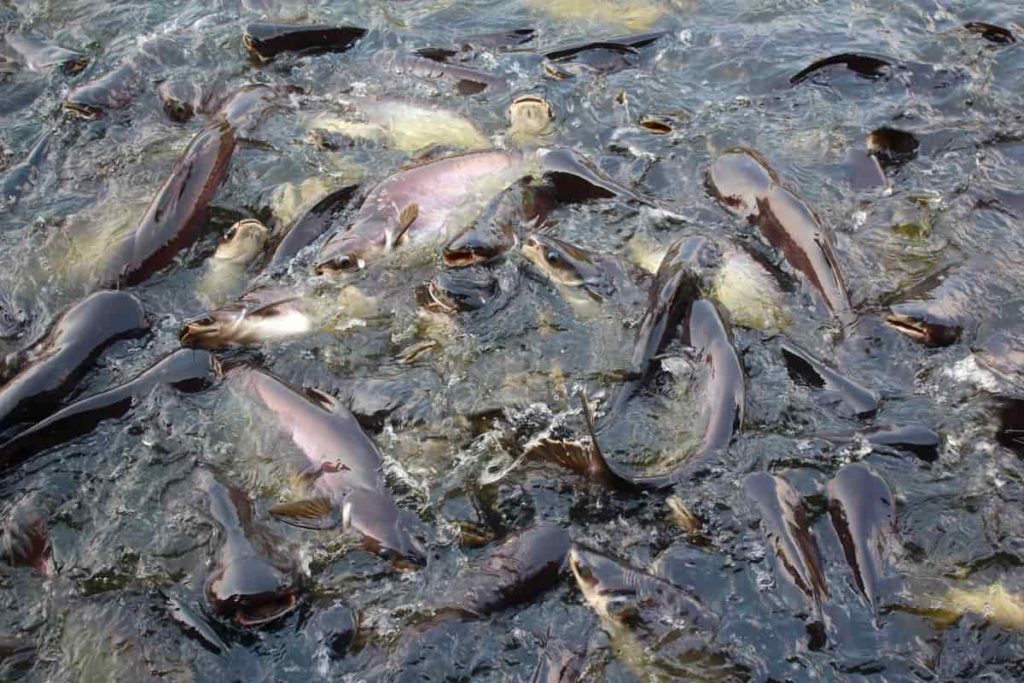
The fish are then transported by gravity through plastic pipes to various tanks. The biggest advantage of this system is that it is done quickly and without much damage to the fish. In intensive fish farming, this equipment is very interesting, especially when the temperature is high and the fish should be handled with care.
Seine reels
The seine reels play an important role in fish farming when the fish is ripe for harvest. During your fishing season, the Seine will help the fish sink to the pond’s bottom and collect in the water. The Seine works with the help of a tractor. With the help of a tractor on the shore and with the power take-off, you will see that the rail will start to accumulate in the outer edges of the sea, so it is collecting the fish in its nets.
The Seine reel comes with a net. While Sean collects the fish in the net, the rails will help drag the fish inside the Seine to shore, where the people in charge will transfer the fish to the classification equipment.
Thermometers
We all know that this device is used to measure temperature. The importance of thermometers in fish farms is mainly to monitor the water temperature.
Generators
Generators are used as backups of farm power supply systems. It would help if you had generators in your fish farm because a malfunction in the power supply system automatically causes the aviation system to fail, which is not good for fish. Especially those in crowded tanks. Fish pumps and elevators This equipment is used for grading fish out of rearing units, loading on trucks, or harvesting only.
Fish pumps and fish elevators
It moves fish out of the growing units for grading, loading on a truck, or simply harvesting. Fish pumps function on the same principles as water pumps; They suck fish and water together and then take them out. All movement is done through (flexible) pipework. It is suitable for floating cage culture.
In case you missed it: Fish Farming in Karnataka: How to Start, Subsidy, License, and Business Plan
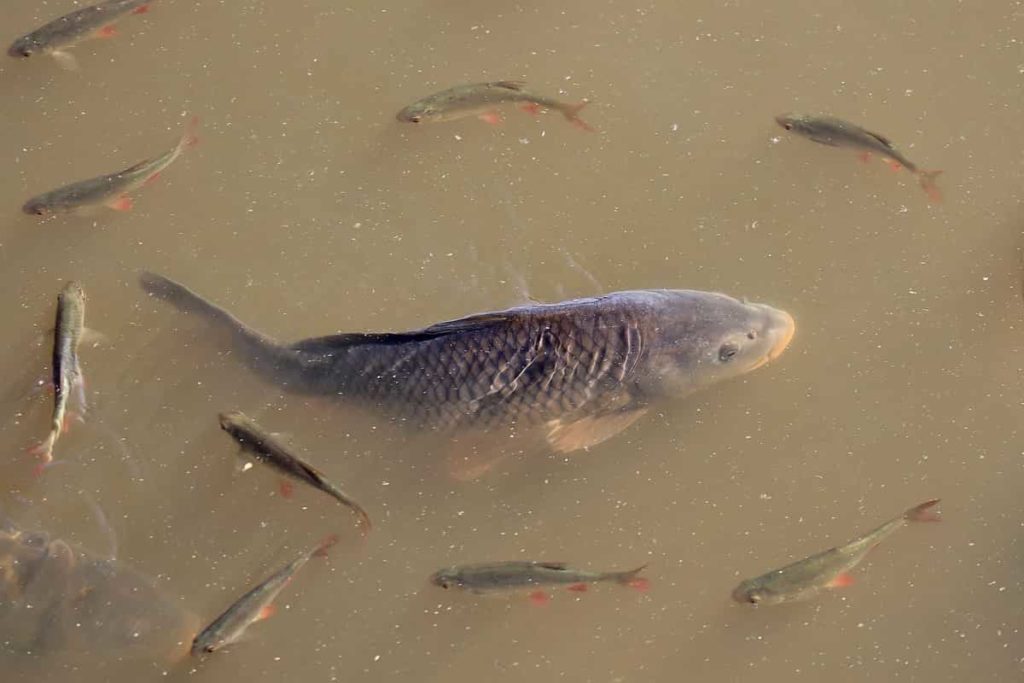
This system lifts water and fish together. Both systems are suitable for various sizes (from a few grams to more than 5 kilograms) and species. This equipment is useful and almost essential when high productivity levels are considered. This machinery can reach up to 10 tons of fish per hour for the largest.
Handling and Grading Equipment
As you harvest fish, you should categorize them by size. The belts quickly carry the fish from the seas to the catch tanks. During the transition, the classification equipment can sort them into a maximum of three different levels. You can count the fish in this place along with the counting equipment. Once the fish are graded, they go into the transfer tank truck with special aerators. The fish are sold in tank trucks.
- Types of Pesticides Used in Agriculture: A Beginner’s Guide
- Economical Aquaculture: A Guide to Low-Budget Fish Farming
- 15 Common Planting Errors That Can Doom Your Fruit Trees
- How to Make Houseplants Bushy: Effective Tips and Ideas
- Innovative Strategies for Boosting Coconut Pollination and Yield
- Pollination Strategies for Maximum Pumpkin Yield
- The Complete Guide to Chicken Fattening: Strategies for Maximum Growth
- Natural Solutions for Tulip Problems: 100% Effective Remedies for Leaf and Bulb-Related Issues
- Revolutionizing Citrus Preservation: Towards a Healthier, Greener Future
- Natural Solutions for Peony Leaf and Flower Problems: 100% Effective Remedies
- Maximizing Profits with Avocado Contract Farming in India: A Comprehensive Guide
- Natural Solutions for Hydrangea Problems: 100% Effective Remedies for Leaf and Flowers
- The Ultimate Guide to Choosing the Perfect Foliage Friend: Bringing Life Indoors
- From Sunlight to Sustainability: 15 Ways to Use Solar Technology in Agriculture
- The Ultimate Guide to Dong Tao Chicken: Exploring from History to Raising
- The Eco-Friendly Makeover: How to Convert Your Unused Swimming Pool into a Fish Pond
- Mastering the Art of Delaware Chicken Farming: Essentials for Healthy Backyard Flocks
- 20 Best Homemade Fertilizers for Money Plant: DIY Recipes and Application Methods
- How to Craft a Comprehensive Free-Range Chicken Farming Business Plan
- Brighten Your Flock: Raising Easter Egger Chickens for Beauty and Bounty
- How to Optimize Your Poultry Egg Farm Business Plan with These Strategies
- Subsidy for Spirulina Cultivation: How Indian Government Schemes Encouraging Spirulina Farmers
- Ultimate Guide to Raising Dominique Chickens: Breeding, Feeding, Egg-Production, and Care
- Mastering the Art of Raising Jersey Giant Chickens: Care, Feeding, and More
- Ultimate Guide to Raising Legbar Chickens: Breeding, Farming Practices, Diet, Egg-Production
- How to Raise Welsummer Chickens: A Comprehensive Guide for Beginners
- How to Protect Indoor Plants in Winter: A Comprehensive Guide
- Ultimate Guide to Grow Bag Gardening: Tips, Tricks, and Planting Ideas for Urban Gardeners
- Guide to Lotus Cultivation: How to Propagate, Plant, Grow, Care, Cost, and Profit
- Agriculture Drone Subsidy Scheme: Government Kisan Subsidy, License, and How to Apply Online
- Ultimate Guide to Raising Araucana Chickens: Breed Profile, Farming Economics, Diet, and Care
- Bringing Hydroponics to Classroom: Importance, Benefits of Learning for School Students
- Ultimate Guide to Raising Polish Chickens: Breed Profile, Farming Economics, Diet, and Care
- Ultimate Guide to Raising Australorp Chickens: Profile, Farming Economics, Egg Production, Diet, and Care
- Silkie Chicken Farming: Raising Practices, Varieties, Egg Production, Diet, and Care
- Sussex Chicken Farming: Raising Practices, Varieties, Egg Production, Diet and Care